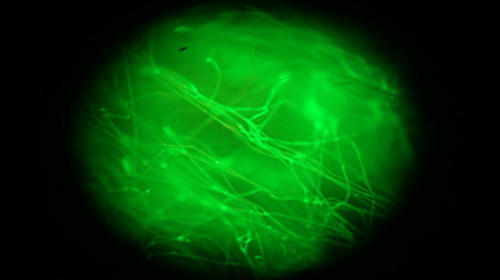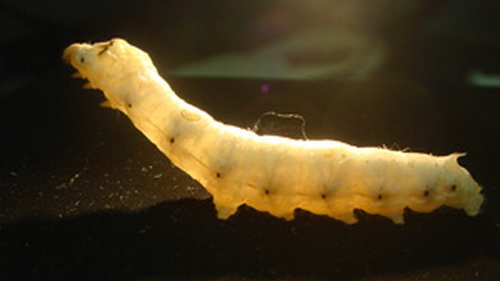Silkworms change genes for artificial silk production
Notre Dame University (France), Wyoming University (USA) and biotechnology company Kraig Biocraft (USA) have succeeded in producing genetically modified silkworms capable of pulling artificial spider silk fibers.
By recombinant DNA technology, the researchers created this genetically modified silkworm based on DNA taken from spiders. When silkworms spin cocoons, silk is produced with a combination of silk and spider silk, significantly improving elasticity and strong force compared to natural spider silk.

Silkworms of silkworms switch genes.

Mature silkworms .
' The generation of silk yarns with spider silk characteristics is one of the important goals of material science ', said Malcolm Fraser, professor of Biology at Notre Dame University. Therefore, this study is considered an important breakthrough in the development of high-grade silk yarn for medical and non-medical applications.
Natural spider silk has some unusual physical properties, in which tensile strength and elasticity are significantly higher than that of spinning natural silk yarn. Spider silk fibers have many potential applications in biomedical materials, such as self-destruct suture materials, improve wound healing tape, or make natural frames for repairing, replacing tendons and ligaments.
In addition, they are also used in bulletproof vests, new generation sports clothes, lightweight and strong fabrics, as well as improving car airbags.
Because silkworms have become a source of commercial silk, these genetically modified silkworms will effectively solve the problem of large-scale silk silk production.
- Color the silk without dyeing
- Producing artificial spider silk lighter than cotton, more durable than steel
- How is silk created?
- Dyed mulberry leaves change color
- Method of production of artificial silk
- Go to Van Phuc village to see how elaborate the silk production process is
- Chinese scientists create super-strong silk that leads to electricity
- New generation artificial spider silk: more durable than steel and 98% made from water
- Genetically modified bacteria can produce super-durable spider silk for making space suits
- The world's first super warm artificial spider silk jacket
- The world's rarest silk weaves from the silk of millions of spiders
- Sardines can produce silk like silkworms
 Why do potatoes have eyes?
Why do potatoes have eyes? 'Tragedy' the world's largest carnivorous life: Death becomes ... public toilet
'Tragedy' the world's largest carnivorous life: Death becomes ... public toilet Tomatoes were once considered 'poisonous' for 200 years
Tomatoes were once considered 'poisonous' for 200 years Detecting microscopic parasites on human face
Detecting microscopic parasites on human face